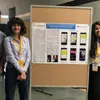How to address the challenges faced by children with Specific Learning Difficulties
Diagnosing a learning disability isn’t always easy. Therefore, it is crucial to have your child tested and evaluated by a qualified professional at the earliest possible.
Every child learns to read, communicate, write, express in his or her own way. Some may do exceedingly well and some might face difficulties. Every individual may or may not learn efficiently. Their learning style differs from one another.
Children with learning difficulties must get diagnosed at an early stage. There are specific assessment techniques used by professionals to diagnose SLD. The importance of using a specific assessment technique is to distinguish between the other disabilities which involves various severity levels like mild, moderate, severe or profound.

Children with Specific Learning Difficulties (CWSLD) are marked by impairment in one or more abilities, which results in their poor understanding of language, spoken or written. This manifests itself in an incomplete ability to speak, listen, spell or even to do mathematical calculations. Let's have a better understanding of how distinct SLD is.
Types of SLDs:
The major types of SLDs are Dyslexia (Difficulty in reading), Dysgraphia (Problems in language- expressive or receptive), Dyscalculia (difficulty with calculations or mathematical symbols), Dyspraxia (difficulty with fine motor skills), Auditory Processing Disorder (affects how sound is interpreted) and Visual Processing Disorder (difficulty interpreting visual information)
Challenges faced by CWSLDs:
One of the major challenge CWSLDs face is a proper initial diagnosis of the problem. As such, their low level of performance is attributed mostly to poor exposure to formal teaching. Many of them face spectrum of difficulties, which go un-noticed, and their severity is further compounded by the environmental, cultural and economic disadvantages.
Diagnosing a learning disability isn’t always easy. One should never assume that we know what our child’s difficulty is, even if the symptoms seem to show a slow learning problem. Most parents simply do not want to accept that there is a real problem with their child. As a result, the problem gets more and more acute as precious time is lost in forcing the child to learn and learning the course curricula by rote. As such it is crucial to have your child tested and evaluated by a qualified professional at the earliest possible.
Signs and symptoms
The following are certain major symptoms that children with SLD show on a day-to-day basis. This study is based on my personal experience as a Special Educator for the past few years.
At an individual level:
- Confused
- Low self-esteem and self-confidence
- Difficulty in focusing on a specific task
- Distracted easily
- Unable to express oneself
- Recalling a proper instruction
- Difficulty in adapting to the environment
At school Level:
- Slow speed of writing
- Poor spelling
- Process of writing is effortful and tiring
- Handwriting is immature
- Difficulty choosing correct spelling alternatives
- Poor sentence and paragraph structure
- Difficulties in oral rhyming, blending and segmenting sounds in words.
- Delayed speech and language development
- Limited spoken vocabulary
- Poor understanding of Phonetics
- Difficulty in the acquisition of letter knowledge
Typical case studies
1. A girl of grade IV hates reading the text aloud in class and has poor writing and spelling skills. Her teachers are always complaining about her academic performance. As a result she was often discouraged thinking that she’s not as smart as her peers.
2. A boy of grade V has problems in comprehending written text. Whenever his class teacher reads from the textbook, he faces difficulty in understanding what is read. As a result, when he was asked questions he was unable to answer them, because he was either getting distracted easily or was found in a confused state.
3. A girl of grade V has problems in handwriting and spelling. Whenever the subject teacher dictated anything in the classroom, even with best of her efforts she was unable to keep up with the class. The reasons cited for her poor performance was not enough hard work and poor memory, while the real reason was that she was struggling to write, as her writing speed was slower than the class.
Proposed interventions/plan:
In order to arrest the problem of CWSLDs before it goes out of hand, as a specialized special educator, I would like to propose the following:
- Imminence of early diagnosis and intervention for clear understanding of the Child in question by a qualified Child Psychologist or Clinical psychologist (RCI approved).
- Once diagnosed, devising and maintaining proper Individualised Educational Program (IEPs) by special educators is a must.
- There should be a constant coordination and interaction between the special educator and the subject/class teacher.
- Providing peer group to CWSLD in classroom for a particular task in order to build coordination between classmates.
- Involving physical activity and games so as to bring about the best in CWSLDs in field other than academic.
- Counsel the other classmates in order to increase the interaction/corporation between them.
- Motivational social stories should be a part of curriculum for self-development of CWSLDs.
- Create a child-centric approach, where the team of special educators, therapists, counselors, class teacher and head of the department can sit together and have a discussion in order to reach constructive decisions for enhancement and better growth of the CWSLDs.
- Counsel the parents of CWSLDs so as to keep him/her motivated and belonged at home.
- Sensitisation programs to be organized at school not only for students but also for academic teachers and non-academic staff.
- Since each CWSLD require a special teaching program that needs to be modified according to severity and individual’s needs, the number of CWSLDs to be entrusted with one Special Educator should be decided accordingly.
(Disclaimer: The views and opinions expressed in this article are those of the author and do not necessarily reflect the views of YourStory.)








